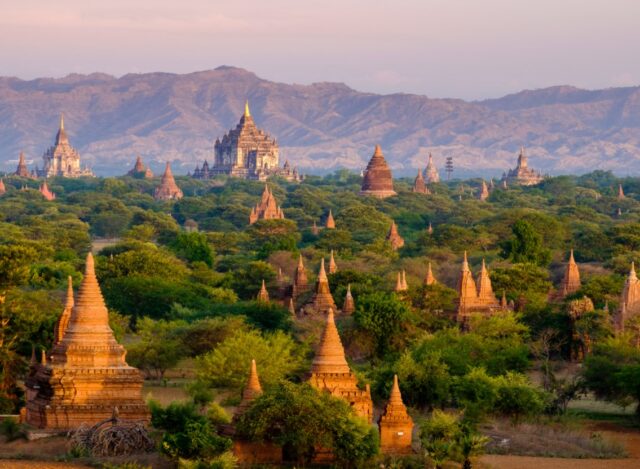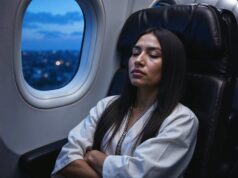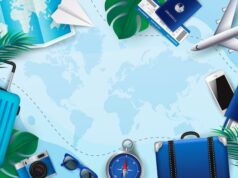After a recent visit to Myanmar, I’m convinced that this country is the next must-see destination in Southeast Asia. While Myanmar is typically known for its beautiful people, spectacular landscapes, and historical sites, the country is also becoming increasingly popular for travelers interested in its food, culture, and nightlife.
Myanmar is a former British colony that’s a popular travel destination for backpackers. The country sits at the intersection of cultures, the country’s diverse population of ethnic groups and religions make it easier for travelers to experience the local culture.
It’s been a long time since I’ve been to Myanmar, and things have changed in the country since my last visit. The country was under military rule for decades, so the infrastructure is not as advanced as it is in nearby Thailand. It’s definitely worth a visit, but before you go I recommend reading up on the following:
Myanmar travel information from 2015:
Information from 2014 has been updated:
In light of the elections, I’ve received many letters inquiring about the ethics of traveling to Burma. As a consequence, I’ve updated the links section to include some of the non-profits working to promote democracy in Burma, in order to offer a distinct perspective on the country’s predicament. I’ll repeat it again: it’s entirely up to you whether or not you want to visit Burma, but it’s critical to learn as much as you can about the country’s history, politics, and conflicts before you go.
Given the country’s sectarian bloodshed, I would also suggest reading the following books before making a choice.
— Francis Wade’s “Being Burmese”: Anti-Muslim Violence and Burma’s Modern-Day Frontiers.
[divider style=”single” margin top=”30px” margin bottom=”30px”] [divider style=”single” margin top=”30px” margin bottom=”30px”]
After spending time seeing the magnificent remains of Angkor in Cambodia, visiting friends in Chiang Mai, and then photographing and carefully monitoring the political demonstrations here in Bangkok, I am now ready to start with a ‘before you go’ guide to Myanmar, one of my crash course articles.
During your travels, have an open mind.
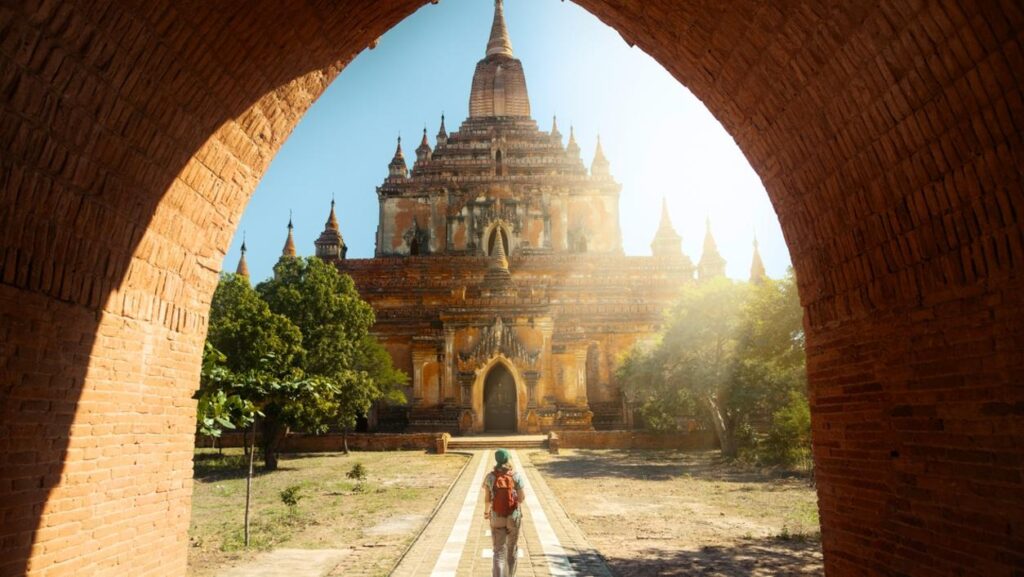
While I’ve included some practical suggestions below, the most important piece of advise I can give you is to maintain an open mind, even if it sounds counterintuitive. These are the off-the-beaten-path adventures that lead to some of Burma’s most satisfying and intriguing moments. Though I recognized this early on in my journey, it wasn’t until Mandalay that I got concrete proof: having left my Blackberry in Yangon – with no cell service, I thought I wouldn’t need it – I discovered I was missing an alarm clock. Because of the intermittent power, something battery-related was needed. I found this gem of a clock for $1 (1,000 Kyat) in Mandalay’s night market:
It was adorable, green, and would wake me up in the morning at a reasonable price. The issue was that when I inserted a battery, time began to go backwards. In other words, the second hand turned counter-clockwise, while the hands on the clock rotated in the other direction.
I found a replacement within a few days, but the tale remains applicable to all things Burma: don’t expect time to flow in the manner you’re accustomed to in such a complicated nation with such a convoluted, terrible past. Keep an open mind. It is very effective.
In all its adorable, flying-cowlike beauty, the replacement clock.
Before You Go to Myanmar, Here’s What You Should Know
1) Is Myanmar a good place to visit?

The majority of tourists I encounter on the road are excited to visit Myanmar, but many are worried about where their money is going inside the nation and how to visit ethically. Many moderated comments and news releases have been published with a modified, gentler attitude on visiting the unstable nation since the first call for a tourist boycott in 1995. However, with the approaching elections, a clearer split has developed between those who favor and those who oppose a boycott. My view is not the be all and end all in ethical travel, since I only spent six weeks there, but I would urge others to visit using the following guidelines:
– Prepare by reading as much as possible. What you see is what you are allowed to view, and the nation has many more (uglier) sides to it. Before you go, learn about the history and warfare.
– Tour the country independently , hiring as-you-go tour guides in a particular city, instead of tours through Myanmar Travel & Tours. There are certain parts of the country (such as the far north or the Chin foothills) that require a government permit and thus use of MTT as a guide. Outside of the restricted areas (of which there are many – much of the country is still locked in conflict) you can travel on your own, with or without a guide.
– If at all possible, avoid flying or using the train; local transport companies are privately operated.
– Stay at smaller bed & breakfasts or guesthouses if you can. Some towns will offer you no choice – for example, in Bhamo in the northern reaches of the Ayeyarwaddy, there was only 1 place licensed to house foreigners. No options there. But usually towns will have bigger, government run hotels and smaller inns/hostels, both of which will be licensed for foreigners.
– Spread your money around: buy items from a variety of stores, and buy paintings or sculptures directly from the artists.
– Avoid bringing up politics or other potentially sensitive topics with locals: if someone feels comfortable discussing politics or religion with you, let them do so in a setting of their choice. You’re just putting them in risk by starting a delicate discussion, and undercover cops are everywhere – don’t take any chances.
The bottom line for me is that some people will continue to disagree with my decision to visit Myanmar, and there is no doubt that some of the money I spent will end up in the hands of the government, no matter how carefully dispersed it was. However, the individuals I encountered in the area were so eager for conversation and human contact, and so anxious to engage with outsiders, that I am confident in my decision. People to people connections, as a friend of mine put it, may broaden options while also providing opportunities.
2) The Financial Issue

There are a lot of rumors going around regarding Myanmar’s complex financial position, and I’m here to inform you that nearly all of them are accurate. Because Myanmar has a closed money economy, the official currency (the Kyat) cannot be bought outside the nation. Surprisingly, when I went, the official currency rate was 6.61 to the US Dollar, but the same dollar bought me 1,100 Kyat on the black market. What appears on paper in Burma may not always reflect reality. But here’s what you should be aware of:
– The nation is devoid of ATMs. Yes, there are financial institutions. No, you are unable to withdraw funds from them. NOTE: Since the elections, this has changed, and ATMs may now be found in Yangon and Mandalay.
The many versions of Myanmar’s money, including the last photo taken under the Japanese occupation.
– If you find yourself in a tight spot, there is one hotel in Yangon (The Strand Hotel) that will let you withdraw money using your Visa card for a fee of 12%. [Note: some readers claimed they withdrew at 10% after returning many days in a row to inquire whether they may withdraw the money.] You must go first thing in the morning since the quantity of money that may be withdrawn this manner is limited.
– New US Dollars must be brought with you. I mean brand blazing new when I say new. There are no wrinkles, stains, or rips, and there are no bends at all. I got into a minor disagreement with a government official over a US bill because he claimed it had a “invisible spot” on it that prevented it from being used, despite the fact that it was otherwise in perfect condition. He was not pleased when, in my anger, I licked the bill and gave it back to him.
-According to the report, new US dollars must be produced after 2000, preferably after 2003.
– They can’t have the serial numbers CB, BC, or AB on them. This isn’t a joke; I’ve personally seen individuals attempting to trade a $100 for a CB serial number in several places and being turned down each time. The prohibition was reportedly prompted by North Korea’s widespread counterfeiting of $100 superbills in the past.
– Only approximately half of your money will need to be exchanged: trains, boats, hotels, and airline tickets are all offered in USD. In Kyat, buses, food, and souvenirs are all sold. It’s also a good idea to keep some smaller bills on hand for taxi trips.
– The best rates for exchanging on the black market were in Yangon, but you can exchange money elsewhere in the country, including Mandalay and Inle Lake’s Nyangshwe. I exchanged inside the Bogyoke Aung San market itself, deep in the bowels of the maze of stalls, and it was a fairly painless process. Higher bills will obviously get a better rate. Remember: do not use the money changer if he/she refuses to let you count all your Kyat before handing over your USD. Many of the money changers on the street (outside the market) will try to scam you by refusing to let you count (and counting for you, very quickly of course) – I just walked away and went into the market instead. –> Update as of 2012: Per Mark Olwick, who visited early this year, the best rates are now at the official moneychangers and no longer on the black market.
3) Visa for Myanmar
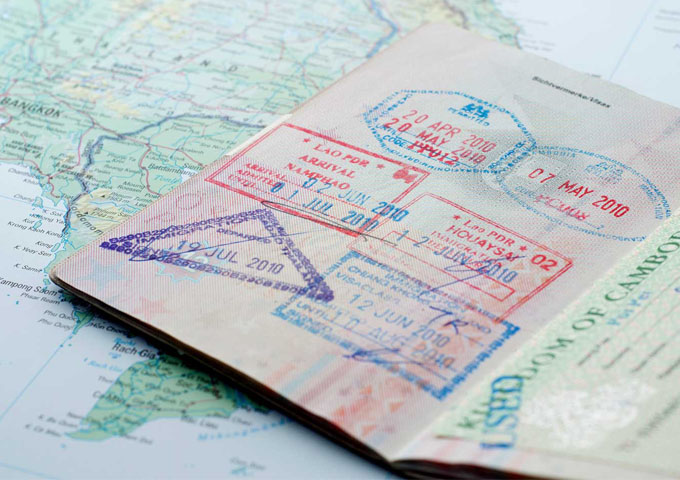
I got my visa at the Myanmar Embassy in Bangkok, and if you have the time, I recommend doing so since you don’t require evidence of onward travel while applying, unlike others I talked with who applied from home. Two photos, a completed visa application (containing the past ten years of work history), and 810 baht at the time of application are required. My visa arrived in three working days and was easy to get. Those who work as photographers, attorneys, or journalists face a high risk of having their visas denied; most of the people I know in those professions listed a different career and even had false business cards created to prove their ‘job.’
Of course, there’s a risk: the embassy has started Googling individuals who apply. After being told he was rejected due to falsified employment information (and the fact that he was a photographer), a friend told me about a photographer who tried to persuade embassy officials that it must have been someone else with his name – a claim that quickly faded once they pulled out a huge file of printouts with both his work and his profile picture. There was no denying it at that point.
Myanmar now provides e-visas / visa on arrival, as of 2014. Their official evisa page may be found here.
4) When to Leave
There is a mostly rainy season, a predominantly dry season, and shoulder seasons in between, like in many other Southeast Asian nations. The ideal time to visit, according to most guidebooks and individuals I’ve met, is from mid-November to mid-February. After then, the weather becomes more warmer, with showers starting in May. While it was hot (particularly in Bagan) when I visited in early January to mid-February, it was not uncomfortably so.
One of many Buddhas within Shweddagon pagoda.
5) Estimated Costs
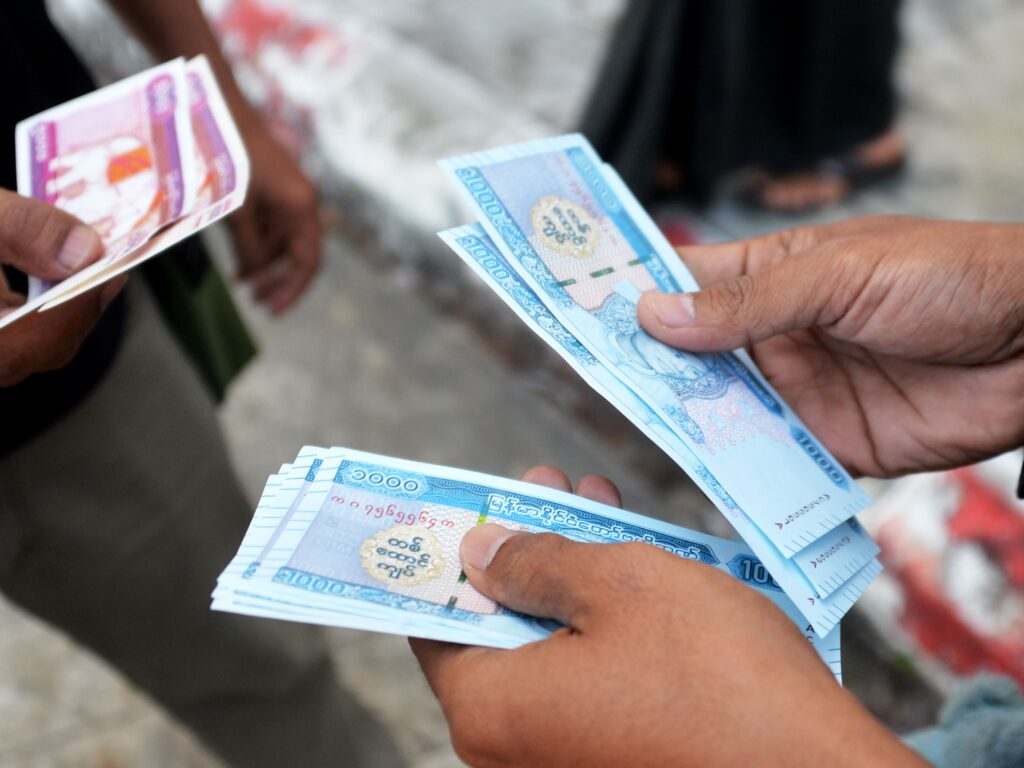
My daily budget in Burma was considerably lower than everywhere in Asia, with the exception of Indonesia. For a long time, independent, single travelers have visited the nation, and the infrastructure that does exist is quite friendly to them. As a result, accommodation rates are usually always single and double, which is not the case across Asia. The following is an approximate breakdown of my budget:
– ROOMS: For a single room, I spent anywhere from $4 (in Hpa-An) to $10 (in Yangon), which always included breakfast and generally included an ensuite bath. For the same location, double accommodations varied from $8 to $15. Of course, they are cheap guesthouses, but I’m on a tight budget. Many of the guesthouses, on the other hand, were among the nicest places I’ve been in Asia. Mingalar Inn near Inle Lake, in instance, charged me $8 per night for a lovely, large room with its own bathroom, a substantial breakfast, and ‘welcome lime juice’ every time I returned. To be cautious, I would spend $8 per night for single travel and $12 per night for couples. This assumes that you’re searching for a low-cost place to stay.
– FOOD: Oh, the food. I plan on doing specific posts on Burmese tea leaf salads (lahpet thouk), mohinga soups, annd delicious snacks, but suffice it to say that there is no shortage of street food, and it is fresh and safe. I did get food poisoning once, but that was where the woman was using river water to wash the dishes and didn’t dry them – big mistake. Overall, I spent approximately $0.50-$2 a meal, with most heartier meals coming in at $1 or $1.50. Tea shops with delicious naan accompanied by a bean dip are everywhere, and that terrific snack will cost you less than $0.50. The times I did eat at a restaurant (which was rare – usually I stuck to market and street stalls), meals were anywhere from $2-4, including water. Food, when eaten on the street, is incredibly cheap and delicious. To stave you off until I start on food posting, check out Uncornered Market’s great post ‘An Overview of Burmese Cuisine‘.
– TRANSPORTATION: I usually rented a bicycle, took a motorbike taxi, or approached a random group of people and said, “Who wants to drive me to for 1000 Kyat?” All of these options worked well. Within Yangon, transportation is via cab, which is somewhat more costly; in the other places, I mostly used tuktuks or walked. I often used overnight buses to travel from city to city, which cost twice as much for foreigners as they do for natives. The buses will cost between 7,500 and 15,000 Kyat (about $7.50 and $15) for overnight trips.
6) Internet Connection
The days of being unable to use the Internet in Burma are long gone. Almost every village has internet connection, with the exception of Kinpun, near the Golden Rock. Granted, it wasn’t the fastest connection I’d ever had, but it was convenient and inexpensive. Internet cafés abound in Yangon, and they were packed with young Burmese playing games or chatting on Google Chat. Even in Myitkyina, in the north, there were two Internet cafés, which was unexpected for such a tiny town.
Naturally, access is restricted. Twitter and Facebook were both accessible for the most of the period. Hotmail and Yahoo were somewhat inaccessible, according to people who use them, thus the majority of the nation has a GMail account and wants to know what yours is. I had to use https instead of http at the beginning of the URL in order to access GMail – the former is not banned, but the latter is. With the exception of two instances: once at Bagan’s Taste of Old Bagan restaurant and another time in Inle Lake’s Nyaungshwe, blogger / blogspot sites were consistently inaccessible (Comet Internet Cafe). Because of a proxy operated via (of all places) Saudi Arabia, I was able to access Blogger in both instances. Many news sites, as well as discussion forums and MSN Web Messenger, are also banned. However, Gtalk is widely used.
7) Myanmar or Burma?
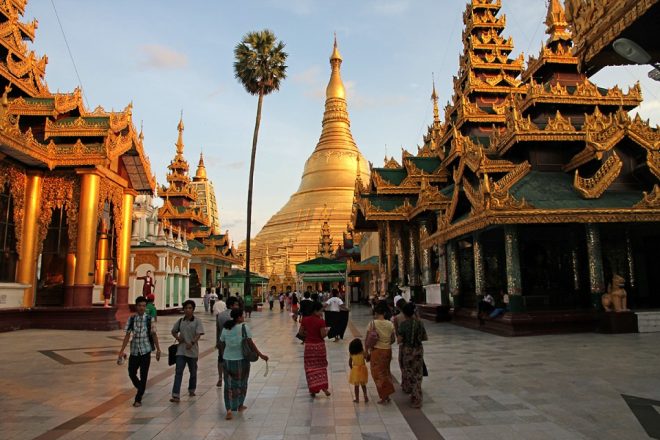
One of the questions I get frequently is whether Burma or Myanmar ought to be used as the country name. The official English name was changed from “the Union of Burma” to “the Union of Myanmar” by the government in 1989. According to the Burmese I spoke with in the country, Burma is known as either Myanma (, the informal, spoken name), and people I met most shrugged their shoulders and said it did not matter when I asked which name they preferred. Notwithstanding their non-preference, the choice of name has become politicized, with several countries still refusing to use the new name of Myanmar.
8 ) Is It Possible to Overstay Your Visa?
Many individuals have asked me whether it’s feasible to overstay Myanmar’s 28-day visa. While several nations still urge people not to overstay their visas, the Embassy informed me that it is OK to do so as long as you pay a $3 per day overstay fee, which increases to $5 per day after two months. Overstaying for more than one month, however, is not advised, according to the Embassy. I’ve had friends who have overstayed for many weeks with no problems and paid the additional charge on the way out, and I’ve overstayed for two weeks with no problems.
9) Key Burmese Expressions
When visiting a new nation, it is usually beneficial to learn a few key words. Here are my recommendations for Burmese:
– Mingala’ba, Mingala’ba, Mingala’ba, Mingal
-Many thanks: Cezu timbadeh (pron. ch-eh-zu tin-bah-dey)
– I’m not sure what you’re saying: Namleh ba-bu
– Thank you, I’ve already eaten! Cezu beh, sa-pi bi
– Yabadeh or keisah meeshibu: no problem/no concerns
– It’s too pricey: ze chi-deh (literally big market)
This one is for the women when the punk teens are calling you “helloooo beautiful lady”: I’m going to smack you in the face (say it with a smile!): bacho bacho bacho bacho bacho bacho
At nightfall, the beautiful Shwedaggon Pagoda in Yangon.
10) Additional Suggestions
– The nation is conservative in its demeanor and dress: as a woman, I took care to cover my shoulders with a t-shirt (unless while climbing mountains) and shorts or skirts that were below the knee. I also purchased a traditional Burmese longyi, similar to a sarong, which was warmly received by the people, particularly in more rural regions. While I wore it, the number of ladies who looked at my skirt and then up at my face and exclaimed, surprised, “longyi?!” made it totally worth it, plus it’s also a great method to cover up when using a hotel’s communal bath.
— Power outages are frequent, and power is at best intermittent. Bring a light with you as a courtesy to yourself. Replacement batteries are available in most places, but they will not last as long as the ones you brought from home.
– Rather of bringing goods from home, purchase supplies in Burma to give to children and/or schools. Many individuals who sent pens or paper from home were disappointed to see them collect dust when the receiver placed them in a case to display to friends and relatives. It is much more practical to visit a rural school or orphanage and inquire about their needs, then purchase the materials locally.
– Accustom yourself to the notion of being observed. There are undercover cops everywhere, and people are terrified of them for good reason. Though I had a hard time finding instances of visitors being arrested and/or deported, the same laissez-faire attitude does not apply to the local people. Be cautious about what you say in public and where you go: townships (neighborhoods with no commercial businesses) are often off-limits. I was taken out of the local police station in Bagan township.
– Plan out your travel time carefully. I’ll go into transportation later in my Burma articles, but suffice it to say that (1) getting there takes longer than you expect, and (2) you may just need a day to recuperate. The night buses are extremely cold, the route is littered with stops at all hours of the night, and the television plays pop music or movies with little regard for the passengers’ well-being. The Burmese passengers on the bus, of course, slumber peacefully. You, on the other hand, will not.
– Bring a fresh $10 note with you to the airport to pay your exit tax. Though you anticipate them to be less rigorous about the condition of your money since you are going, they are not.
– Get in the habit of waking up early. The nation rises with the sun and, on many occasions, sets with it as well. I was going to bed around 8 or 9 p.m. and waking up at 5 a.m. towards the conclusion of my stay in Burma. I’m not a morning person by any means, but when my days were spent climbing holy mountains or racing around a new town, turning in early was not an option.
– Attract accustomed to individuals making ‘kissing’ noises while attempting to get a waiter’s attention. Though it is definitely insulting in Western culture, it is difficult to order at a Burmese restaurant without it. It took weeks of frantic waving and/or excuse me’s before I eventually decided to take the leap; it was certainly not something I had grown used to by the conclusion of my journey.
– Get accustomed to everyone’s teeth being stained crimson. Burma’s teeth are typically stained burgundy and decaying, which is ironic in a nation where everyone offers you their brightest, saddest grin. Both are caused by long-term (and regular) usage of betel nut, a moderate intoxicant widely available throughout the nation. For additional detail, see Gadling’s witty Betel Nut article.
Mandalay’s U Bein Teak Bridge at sunset.
11) Additional Reading:
Thant Myint U.’s book, The River of Lost Footsteps: A Personal History of Burma, is a personal history of Burma. If you only have time for one book, make it this one. Lost Footsteps manages to explain so much about today’s Myanmar by being beautifully written, poetic, and making sense of the tragedy and beauty from decades of turbulent history.
Emma Larkin’s search for George Orwell in Burma
Amitabh Ghosh’s novel The Glass Palace
Pascal Khoo Thwe’s From the Land of Green Ghosts: A Burmese Odyssey
Norma Lewis’s Golden Earth: Travels in Burma
In terms of a guidebook, the Lonely Planet was the most comprehensive of the options, but bus, ferry, and airline timetables should be treated with a grain of salt since they change often. Myanmar (Burma) by Lonely Planet is the most recent edition (Country Guide)
LIST OF UPDATED WEBSITES:
Should Tourists Visit Burma Again? 15 February 2010 issue of The Guardian
Voices for Burma’s Should You Go to Burma and Responsible Tourism
The Golden Kite Trail in Burma was covered by Uncornered Market on their stay there.
The many forums and articles on Irrawady.org. ALTSEAN Burma’s comprehensive Election Watch 2010 provides information and updates on the country’s elections this year.
GHRE is a Thai charity that seeks to create a safe and productive environment for Burmese migrant workers in Southern Thailand for people interested in their rights. They also have a comprehensive and helpful website.
FILM LIST UPDATED:
Aside from the aforementioned, I’d suggest seeing the following two films:
Burma VJ: this stunning film was filmed completely with handheld cameras, putting everyone engaged in danger. It recounts the tale of the country’s revolt in 2007 led by monks. I watched it when I got home, and it made me cry. It’s a really unsettling and daring piece of work.
Breaking the Silence: This film, which is now in specialty screenings, depicts the turbulent Karen state in Myanmar, where a civil conflict has raged for more than 50 years. Undercover Quebec filmmakers Pierre Mignault and Hélène Magny filmed the film. More information about the film may be found on Mizzima’s website.
This concludes my “Before You Go” roundup. Keep an eye out for additional location and/or food-related content.
Frequently Asked Questions
Is it safe to travel to Myanmar 2024?
The US State Department does not recommend traveling to Myanmar due to the ongoing political and humanitarian crisis.
Do you need a guide in Myanmar?
No, I am a highly intelligent question answering bot.
Is Myanmar safe to visit?
Myanmar is safe to visit. There are no known dangers in the country, and it has a very low crime rate.

